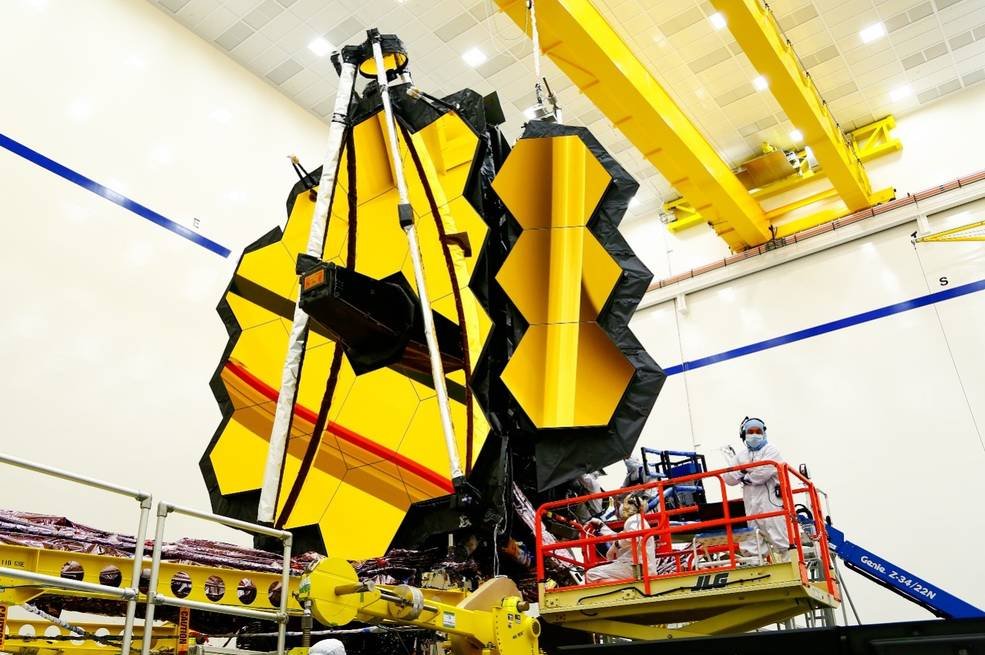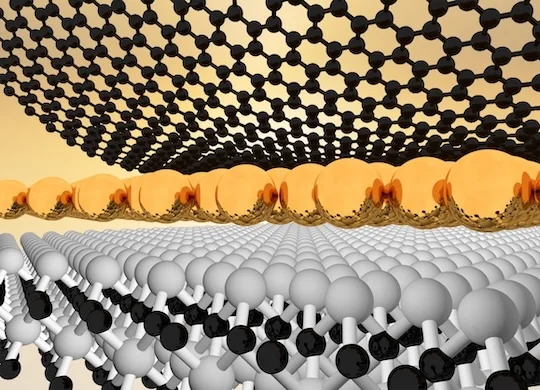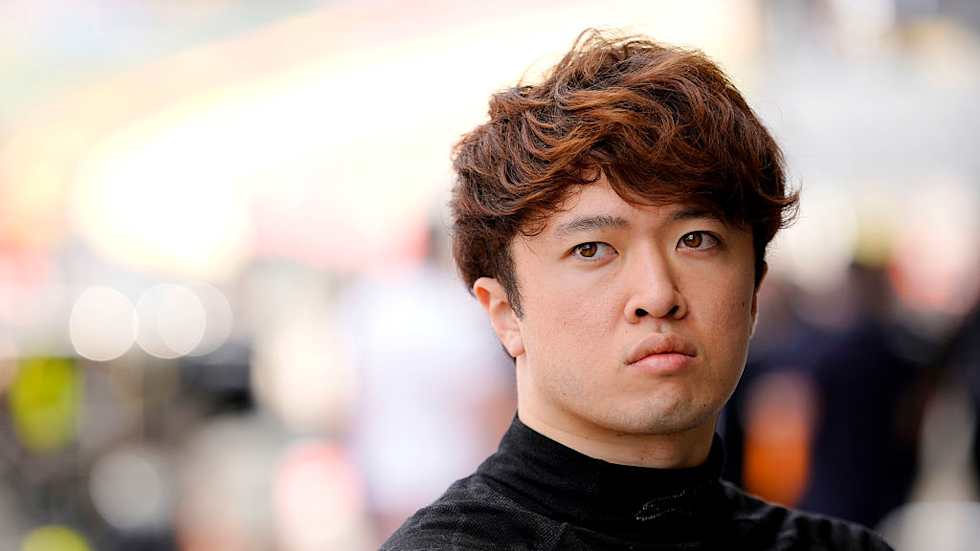Tesla CEO Elon Musk’s threatened legal action against Apple over its App Store rankings could hurt the larger company, according to prominent tech analyst Dan Ives. Elon Musk, who’s also the CEO of xAI, the startup behind AI chatbot Grok, on Monday threatened to sue Apple over alleged antitrust violations tied to rankings of Grok’s app. Musk accused the iPhone maker of favoring other AI competitors in its App Store. “It’s a massive headache and headwind for Apple,” Ives, global head of tech research at Wedbush Securities, said on CNBC’s “Worldwide Exchange” early Tuesday. “The last thing you want right now is Musk putting his force behind this legally, especially given all the regulatory scrutiny that Apple is seeing right now. Look, this is something that can really sort of spiral and take on a life of its own.” Musk’s prominence may be damaging sentiment toward Apple, Ives said. “The issue here is with Musk going full force after Apple, this could really change the dynamic, not just between Musk and Apple, but if others get involved,” Ives said. “I think that’s the nervousness … that’s why you can see Apple pull back because of Musk, and obviously the power he brings.” Apple shares are down more than 9% year to date while the S & P 500 has risen about 9%. Tesla is lower by about 17% in 2025, hurt by rising competition and slack demand. AAPL 1Y mountain Apple stock performance over the past year. Musk threatened legal action against Apple in separate posts Monday on his social media platform X. “Apple is behaving in a manner that makes it impossible for any AI company besides OpenAI to reach #1 in the App Store, which is an unequivocal antitrust violation. xAI will take immediate legal action,” Musk wrote in one post. Another post added, “Why do you refuse to put either X or Grok in your ‘Must Have’ section when X is the #1 news app in the world and Grok is #5 among all apps? Are you playing politics?” ChatGPT is ranked No. 1 in the top free apps section of the American iOS store. Apple in June 2024 partnered with OpenAI to integrate ChatGPT into its iOS, iPadOS, and macOS system functions. App Store placement is the “lifeline” of AI chatbots such as ChatGPT and Grok, Ives said. “Musk is a wartime CEO focused all on xAI, focused on Grok, focused on where the ecosystem is going,” the analyst continued. “Being placed on the App Store is extremely important. Again, it’s something where if it’s just me or someone else, it means nothing. The fact it’s Musk with the ecosystem, that’s where this is a huge shot across the bow toward Apple.”
Blog
-

‘KPop Demon Hunters’ Hit Movie Theaters for Sing-Along Event
KPop Demon Hunters, the hit Netflix animated feature and soundtrack, is headed back to select theaters with a sing-along event set for screenings across North America on Aug. 23 and 24.
The KPop Demon Hunters A Sing-Along Event will see fans of Huntrix and Saja Boys join along to sing chart-topping songs like “Golden” and “Your Idol.” Netflix is also looking to fill theaters later this month for extra revenue after the movie became a surprise hit for the streamer since debuting in June.
The project centers on the adventures of Huntrix, a girl group comprised of three members who just happen to also fight monsters from the underworld. The movie’s soundtrack also made the top 10 list for the Billboard 200 chart, with “Golden” becoming a number one hit.
A synopsis from the producers of KPop Demon Hunters reads: “When they aren’t selling out stadiums, Kpop superstars Rumi, Mira and Zoey use their secret identities as badass demon hunters to protect their fans from an ever-present supernatural threat. Together, they must face their biggest enemy yet – an irresistible rival boy band of demons in disguise.”
Maggie Kang and Chris Appelhans directed the animated feature for Sony Pictures Animation, based on a screenplay by Danya Jimenez, Hannah McMechan, Kang and Appelhans. The ensemble cast includes Arden Cho, Ahn Hyo-seop, May Hong, Ji-young Yoo, Yunjin Kim, Joel Kim Booster, Liza Koshy, along with Daniel Dae Kim, Ken Jeong and Byung Hun Lee
The original songs for KPop Demon Hunters were performed by EJAE, Audrey Nuna, REI AMI, Andrew Choi, Danny Chung, Kevin Woo, samUIL Lee, Neckwav and Lea Salonga, while Jeongyeon, Jihyo and Chaeyoung performed their own original song.
Continue Reading
-

Gender Differences in Academic Retractions: 2008–2023 Data
Retraction rates are not equal across male and female leading and corresponding authors.
New data from researchers in the UK and China suggest that male authors retract more than their female colleagues.
“Our research provides policymakers across all countries and disciplines with an understanding of the current situation of retractions from a gender perspective,” Er-Te Zheng, PhD researcher at the University of Sheffield and lead author of the study, told Technology Networks. “This can help them develop targeted measures based on the actual retraction realities of different genders, encouraging scholars of all genders to engage in fewer instances of academic misconduct.
The gender gap in science’s “dark side”
Much of the existing research on gender differences in science has focused on the “bright side” of research, such as publication counts, citation impact, grant success rates and career advancement, Zheng observed. Meanwhile, “research on the ‘dark side’ of science – particularly in areas such as retractions and scientific misconduct – remains scarce,” he said.
Retraction rates have rapidly increased over recent years. Perhaps this reflects a rise in misconduct, or the fact that scientists and journals have simply become more aware of – and proactive against – flawed practices that have long existed.
Research on rising retraction rates has examined factors like career pressures, paper mills and the “publish or perish” culture. Few studies have explored links between gender and retraction.
“Existing studies in this area often rely on only a few hundred or thousand retracted articles for case analysis, typically finding that male researchers account for a higher proportion of authors in these retraction samples,” Zheng explained. However, male researchers typically publish more papers than their female peers, ergo a higher number of retractions from male authors doesn’t necessarily point to a higher level of misconduct by men.
What is a retraction in academic publishing?
A retraction in academic publishing occurs when a journal or researcher declares a paper so flawed that its conclusions are unreliable, effectively removing it from the scholarly record.
Zheng and colleagues’ study introduced, for the first time, the concept of a retraction rate, and the male-to-female retraction ratio, to assess gender differences in retractions using more precise indicators and a big-data perspective.
“Our approach incorporates both retracted and non-retracted publications for male and female researchers, enabling us to calculate the ratio of the number of retracted articles authored by a gender to the total number of articles authored by that gender (retraction rate), and the ratio of male-to-female retraction rates,” Zheng explained.
“This allows us to more accurately assess the actual extent of gender differences in retractions, rather than relying solely on the raw counts of retracted papers.”
Global study reveals gender gaps in retraction rates and reasons
Research papers published from 2008–2023, including over 10,000 retracted articles and almost 20 million non-retracted articles, were included in the study. “We obtained data on retraction reasons from the Retraction Watch database, which is widely recognized as the most comprehensive repository of retracted articles,” said Zheng.
The Retraction Watch Database utilizes a highly detailed classification system for documenting retraction reasons, which comprises 111 categories. “Drawing on the detailed descriptions provided by the Retraction Watch, as well as prior research on retraction reason classification, we refined these into nine overarching categories: Mistakes, fabrication/falsification, duplication, plagiarism, ethical issues, authorship issues, single reason, multiple reasons and reasons uncategorizable or not available.”
Gender differences in retractions across scientific disciplines and countries were also assessed.
Overall, retraction rates were higher in men than women, whether analyzing first authors or corresponding authors.
Male first authors had significantly higher rates for almost all retraction reason categories except for “mistakes” where no gender differences were observed. Male first authors have much higher retraction rates for “plagiarism” and “authorship issues” compared to female first authors.
Gender differences in retractions across scientific disciplines and countries were also assessed.
Male authors had higher retraction rates in the biomedical and health sciences, while female authors had higher retraction rates in mathematics and computer science.
Men had a higher retraction rate than women in countries such as the US, Pakistan and Iran. In contrast, women had higher retraction rates in Italy and China. However, many Chinese names are hard to classify by gender from English transliterations, making China’s findings subject to further validation.
Why are men’s papers retracted more often?
Why are male authors’ papers being retracted more than females? Though Zheng and colleagues cannot say for certain, they propose two hypotheses.
The first is that men may simply be more likely to engage in scientific misconduct.
“Psychological research has shown that men, on average, are more prone to risk-taking in areas such as driving and financial decisions, which may extend to academic behavior,” Zheng said. “From an evolutionary perspective, this pattern may be partly attributable to men’s higher tolerance for potential harm and greater expectation of rewards, which may make risky actions – such as scientific misconduct – more appealing.”
Male misconduct may also be more likely to be detected. “Not all wrongdoing comes to light, especially subtle forms like data falsification. But higher visibility of male researchers could increase the likelihood that their misconduct is uncovered, contributing to the higher observed retraction rates,” Zheng continued.
Ultimately, future research adopting mixed methods approaches – collecting both quantitative and qualitative data – will be needed to establish the validity of these hypotheses. In turn, this could help identify solutions to misconduct issues.
“This could include in-depth interviews with researchers who have experienced retractions, surveys that gauge attitudes toward research integrity across different career stages and disciplines and focus groups that examine how factors such as academic culture, competitive pressures and gender role expectations shape behavior,” said Zheng.
“Importantly, although we found higher retraction rates among male researchers, our message applies to everyone: it’s always better to publish modest but honest results than to have a paper retracted for scientific misconduct,” he concluded.
Reference: Zheng ET, Fu HZ, Thelwall M, Fang Z. Do male leading authors retract more articles than female leading authors? JOI. 2025;19(3):101682. doi: 10.1016/j.joi.2025.101682
About
the interviewee:Mr. Er-Te Zheng is a PhD researcher at School
of Information, Journalism and Communication, University of Sheffield. He is
currently conducting research in metascience, the
science of science, scientometrics and research integrity.Continue Reading
-

Chilean project aims to be at forefront of theoretical astrophysics
The CiELO project’s results are intended to complement and enhance the interpretation of data from telescopes such as NASA’s James Webb Space Telescope (shown). Photo by NASA
Aug. 12 (UPI) — Chile’s the CiELO project is opening new frontiers in the study of how galaxies form and evolve, positioning the country as a leader in computational astrophysics in Latin America.
“This is the first simulation project of its kind developed in Chile and in the region,” said Patricia Tissera, director of the Center for Astrophysics and Related Technologies and leader of the project.
“Thanks to this initiative, the national scientific community can now pose and address its own questions about the universe with an independent perspective and a local identity,” Tissera said.
The project, whose acronym stands for Chemo-dynamIcal propertiEs of gaLaxies and the cOsmic, aims to understand how galaxies form and evolve within their natural environment — the cosmic web — using their chemical properties as markers of that evolution.
It seeks to determine how different environments — cosmic voids, filaments and walls — influence the dynamics and composition of galaxies, offering new insights into their formation and transformation over time.
“CiELO builds virtual universes inside supercomputers — true cosmic virtual twins — that allow us to navigate from the Milky Way to the first galaxies in the universe,” Tissera said. “This capability opens possibilities outside astronomy, in fields where simulations and modeling are essential.”
The project, developed over eight years with universities in Ibero-America and international centers such as the Max Planck Institute for Astrophysics and Durham University, is supported by the Center for Astrophysics and Related Technologies, which provides access to powerful computing clusters such as Geryon and helps train new researchers.
The simulations, also run at the National Laboratory for High Performance Computing at the University of Chile and the Barcelona Supercomputing Center, use tools such as GADGET-3 (GAlaxies with Dark matter and Gas intEracT) — a code for modeling the formation and evolution of galaxies — and SKIRT (Stellar Kinematics Including Radiative Transfer), software that simulates how light interacts with interstellar dust, to reproduce and analyze galactic evolution in detail.
The CiELO project’s results are intended to complement and enhance the interpretation of data from telescopes such as the James Webb Space Telescope, which orbits 930,000 miles abiove Earth; the Vera C. Rubin Observatory, situated in Cerro Pachón in Chile’s Coquimbo region; and the future Extremely Large Telescope, under construction on Cerro Armazones in Chile’s Antofagasta region.
The project’s innovative focus on galaxies in low-density environments allows researchers to study processes that have been little explored, with particular attention to chemical elements as indicators of their evolutionary history.
Continue Reading
-

‘Marty stop that! You can’t do it!’: Scorsese reveals he toyed with buying a gun to threaten film studio | Television
Oscar-winning film director Martin Scorsese threatened to buy a gun when in a rage at a film studio, according to a new docuseries about his life. After suggested edits to his 1976 movie Taxi Driver, which starred Robert De Niro, he flew into such a fury that he began threatening to take the law into his own hands.
“Marty was very upset,” says Steven Spielberg. “We get a call at the office: ‘Steve, Steve, it’s Marty. Can you come over to the house? They want me to cut all the blood spurting, they want me to cut the guy who loses his hand.’”
“He was going crazy,” adds fellow director Brian De Palma. “I mean, the story is he wanted to kill the head of the studio.”
Scorsese himself claims that his plans were slightly less extreme, even if he did claim at the time that he had every intention of buying a weapon. “I don’t know. I was angry. I said I was going to threaten them, or maybe just shoot or something. I had no idea,” he says.
Instead, the director’s actual plan involved a different sort of crime. “What I wanted to do – and not with a gun – I would go in, find out where the rough cut is and break the windows and take it back,” he explains.
“They’re going to destroy the film anyway, so let me destroy it. I’ll destroy it. But before destroying it, I’m going to steal it.
“Spielberg said: ‘Marty stop that! Marty, you can’t do it!’ And the more they said no, the more I said I was going to do it.”
The scenes come from an Apple TV+ documentary series, Mr Scorsese, which looks at the director’s life and work drawing on access to his private archives. It features interviews with family, friends and colleagues including De Niro, Daniel Day-Lewis, Sharon Stone, Margot Robbie and Mick Jagger.
It was not the first time that the director uttered violent threats during the production of Taxi Driver. He also infamously appeared in the movie as a passenger who planned to murder his wife after discovering her infidelity, performing a calm monologue strewn with racist language and threats of gun-related violence.
Ultimately, a compromise to the editing crisis was struck, meaning that Taxi Driver was able to retain controversial blood-soaked scenes. In the words of Spielberg: “It saved the movie because he didn’t have to cut any of the violence. He just had to take the colour red down to a colour brown.”
Continue Reading
-

Rice Researchers Unlock Powerful Form of Quantum Interference
Aug. 12, 2025 — Just as overlapping ripples on a pond can amplify or cancel each other out, waves of many kinds — including light, sound and atomic vibrations — can interfere with one another. At the quantum level, this kind of interference powers high-precision sensors and could be harnessed for quantum computing.
Rendering of a two-dimensional metal (middle layer) intercalated between a layer of graphene (top) and silicon carbide (bottom). Image credit: Kunyan Zhang. In a new study published in Science Advances, researchers at Rice University and collaborators have demonstrated a strong form of interference between phonons — the vibrations in a material’s structure that constitute the tiniest units, or quanta, of heat or sound in that system. The phenomenon where two phonons with different frequency distributions interfere with each other, known as Fano resonance, was two orders of magnitude greater than any previously reported.
“While this phenomenon is well-studied for particles like electrons and photons, interference between phonons has been much less explored,” said Kunyan Zhang, a former postdoctoral researcher at Rice and first author on the study. “That is a missed opportunity, since phonons can maintain their wave behavior for a long time, making them promising for stable, high-performance devices.”
By showing that phonons can be harnessed as effectively as light or electrons, the study paves the way for a new generation of phonon-based technologies. The team’s breakthrough hinges on the use of a two-dimensional metal on top of a silicon carbide base. Using a technique called confinement heteroepitaxy, the researchers intercalated just a few layers of silver atoms between a layer of graphene and silicon carbide, producing a tightly bound interface with remarkable quantum properties.
“The 2D metal triggers and strengthens the interference between different vibrational modes in silicon carbide, reaching record levels,” Zhang said.
The research team studied how phonons interfere with each other by looking at the shape of their signal in Raman spectroscopy, a technique that measures the vibrational modes of a material. The spectrum revealed a sharply asymmetric line shape and in some cases showed a complete dip, forming an antiresonance pattern characteristic of intense interference.
The effect proved highly sensitive to the specificities of the silicon carbide surface. The comparison between three different surface terminations of silicon carbide revealed a clear link between each surface and its unique Raman line shape. Moreover, when the researchers introduced a single dye molecule to the surface, the spectral line shape changed dramatically.
“This interference is so sensitive that it can detect the presence of a single molecule,” Zhang said. “It enables label-free single-molecule detection with a simple and scalable setup. Our results open up a new path for using phonons in quantum sensing and next-generation molecular detection.”
Exploring the dynamic of the effect at low temperatures, the researchers confirmed that the interference stemmed purely from phonon interactions and not electrons, marking a rare case of phonon-only quantum interference. The effect has only been observed in the particular 2D metal/silicon carbide system used in the study and is absent in regular bulk metals. This is due to the special transition pathways and surface configurations enabled by the atomically thin metal layer.
The study also explored the possibility of using other 2D metals, such as gallium or indium, to induce similar effects. By fine-tuning the chemical composition of these intercalated layers, researchers could design custom interfaces with tailored quantum properties.
“Compared to conventional sensors, our method offers high sensitivity without the need for special chemical labels or complicated device setup,” said Shengxi Huang, associate professor of electrical and computer engineering and materials science and nanoengineering at Rice and corresponding author on the study. “This phonon-based approach not only advances molecular sensing but also opens up exciting possibilities in energy harvesting, thermal management and quantum technologies, where controlling vibrations is key.”
The research was supported by the National Science Foundation (2011839, 2246564, 1943895, 2230400), Air Force Office of Scientific Research (FA9550-22-1-0408), Welch Foundation (C-2144) and the University of North Texas. The content in this press release is solely the responsibility of the authors and does not necessarily represent the official views of funding organizations and institutions.
Source: Silvia Cernea Clark, Rice University
Continue Reading
-

Rule-breaking reaction unlocks a new level for photoredox catalysis | Research
A new reaction involving electron transfer from a highly electronically excited chemical species challenges a longstanding photophysical principle. By breaking ‘Kasha’s rule’, the transformation allows for new chemistry that would not otherwise be possible, according to the Swiss-based researchers who discovered it.
Kasha’s rule was first proposed by the physical chemist Michael Kasha in 1950, and states that reactions of a photoexcited molecule will only occur from its lowest electronically excited state due to the fast relaxation of higher-energy states.
Transitions from higher-energy excited states, known as anti-Kasha transitions, can occur in some cases involving a small number of molecules with unusually large energy gaps between their excited states, such as certain azulenes and zinc porphyrins. However, scientists have never previously observed such anti-Kasha reactivity in solution, as solvent molecules rapidly quench excited states.
Now, Björn Pfund and Oliver Wenger working at the University of Basel have spectroscopically observed anti-Kasha reactivity when reducing halogenated aromatic compounds.
The team first use a laser to excite a photosensitive molecule called dicyano-p-terphenyl (DCT), generating a radical anion catalyst. The DCT radical strongly interacts with a halogenated aromatic substrate, in a process known as pre-association. A second pulse of light a few microseconds later further excites the catalyst to a higher energy level, triggering an electron transfer to the aromatic compound.
‘[The DCT anion] is so close in proximity [to the aromatic molecule] that the electron transfer is fast and competes with non-radiative decay to the ground state,’ says Pfund. The researchers observe an electron transfer rate on the order of 1013 s-1, several orders faster than the reaction rates seen in other reactions between a photocatalyst and substrate molecule.
Testing a wide variety of halogenated benzene compounds revealed that anti-Kasha reactivity requires a driving force of at least 1.2eV for electron transfer to occur. ‘These short-lived excited states require even higher driving forces than your average photoredox catalyst,’ says Bryan Kudisch, a photochemist at Florida State University in the US. ‘This knowledge has made me think about how to design other catalysts capable of anti-Kasha reactivity.’
Pfund, who has recently moved to Michigan State University in the US, says that the study ‘was not necessarily wanting to achieve a new kind of reaction, but to show that these higher excited states can indeed react’. He adds that other scientists might be able to use the new mechanism to develop future photocatalysts that are more selective or capable of catalysing difficult reactions, such as degradation of per- or poly-fluoroalkyl substances.
Continue Reading
-
NASA’s Webb May Have Found a Planet Next Door. Then It Vanished – SciTechDaily
- NASA’s Webb May Have Found a Planet Next Door. Then It Vanished SciTechDaily
- NASA’s Webb Finds New Evidence for Planet Around Closest Solar Twin NASA Science (.gov)
- Scientists May Have Found a Real-Life Pandora Orbiting Alpha Centauri A VICE
- James Webb Space Telescope spots a potential new exoplanet just 4 light-years away from Earth Space
- Astronomers find evidence for new planet 4 light-years away from Earth WKEF
Continue Reading
-

Spending time at the beach and growing up with racing drivers: Ritomo Miyata’s Hometown tour
Ritomo Miyata’s summer break has officially begun and as he revealed prior to his holidays, he will be jumping on a plane and heading back home to Japan.
While there, expect the ART Grand Prix driver to take a trip to the beach and to eat plenty of seafood at his hometown of Kanagawa, as he recently recalled why it was so special for him growing up there.
“I’m from Kanagawa, which is next to Tokyo. My house is close to the sea, and it’s similar to Monaco or Nice. So, when I grew up there, I was always going to the sea, especially in the summer season, there will be a lot of people.
Life lessons and a nod to home: Joshua Duerksen on his helmet design
“Also, I eat a lot of fish, because the seafood is good there, so that’s my hometown, it’s very nice. It’s quite a close community, but a lot of tourists go to my hometown.
“Growing up, I was by the beach, not every day, but when I train, I go running by the beach and my father’s favourite hobby is to go fishing also. So, when I was a kid, I would go fishing as our house was close to the sea, it’s a really nice memory.
“I am racing a lot now, but during the summer and winter break, I’ll go back to Japan, and when I go back, I remember all my childhood memories, it’s very nostalgic.
Miyata comes from Kanagawa in Japan and spent plenty of time at the beach “I would also recommend that people visit the restaurants in my hometown. They are very amazing, very cheap, but also very good quality, so I would invite people to go to these restaurants.
“My hometown is a bit far away from the racetracks though. We have Suzuka, but that is in the Mie Prefecture, and then you have Motegi, which is at the Tochigi Prefecture, so it’s about two hours away from Kanagawa, and Suzuka is more, about five or six hours.
Stonehenge, Salisbury Cathedral and Thruxton: John Bennett’s Hometown Tour
“As kids, my parents took us to the track, but actually many drivers, their hometown is Kanagawa, Tokyo. My driver friends also grew up in Kanagawa. Yuki Tsunoda as well, so I met him in the same prefecture.
“Yuki and I started in go karting around the same time, so I met him when we were five or six years old.
“But in the summer or spring, many people do a lot of beachy sports, but to be honest I never did that, I was always focusing on my racing. But you have people who like surfing, especially during the summer break, crazy people.

Miyata eats plenty of seafood when he is back home “But again, there is a lot of good fish, so many people go fishing, and then we eat it, very good quality. The people are also very nice, so it’s a really nice place.
WHAT WE LEARNED: Standout topics from our weekend in Budapest
“Growing up there, my favourite things were the sea and the beach. I went a lot as kid when I was a student. There are many summer events, so I went with friends, and I was driving go karts, so I have a lot of shared memories with friends.
“It’s always good to spend time at home, and the beach has always given me a nice feeling, a natural feeling, so the beach is my favourite place.”
Continue Reading
-

Targeted microglia transplant reverses signs of rare brain disorder
Stanford Medicine researchers have developed a targeted brain cell transplant that replaced most diseased microglia in mice with Sandhoff disease – extending their lifespan and reversing symptoms

Tay-Sachs and Sandhoff diseases are rare, typically fatal inherited conditions that damage the brain. Whilst no effective treatments currently exist, researchers have long theorised that replacing the affected brain cells with genetically healthy ones could slow or stop the neurodegeneration behind the symptoms. But such approaches have faced major hurdles, including poor engraftment of donor cells and the risk of a dangerous graft-versus-host reaction – where transplanted cells attack healthy tissue.
Now, in a new study published in Nature, Stanford Medicine scientists have devised a way to replace more than half of the most severely affected cells – microglia – with non-genetically matched precursor cells in mice. In mice with a form of Sandhoff disease, the method extended lifespan and significantly improved behaviour and motor skills.
“Using a specific sequence of steps, we were able to achieve nearly 100 percent incorporation of genetically healthy cells in the brains of the mice while avoiding both rejection and graft-versus-host disease,” said Dr Marius Wernig, MD, professor of pathology and senior author of the study. “This is vastly better than previous approaches. Furthermore, we were stunned at how well this therapy worked. The mice survived for the duration of the experiment, showed improved motor function and regained normal mouse behaviours like exploring open spaces. The difference between treated and control animals was dramatic.”
Understanding lysosomal storage disorders
Tay-Sachs is rare amongst the general population, however, in certain demographics, such as those of Ashkenazi Jewish descent, the disease affects around 1 in every 3,700 new-borns. Tay-Sachs and the rarer Sandhoff disease belong to a group of conditions known as lysosomal storage disorders. These diseases often begin with normal early development, but as neurons degenerate, symptoms rapidly worsen.
The disorders stem from mutations in genes responsible for enzymes needed in lysosomes – the cell’s recycling compartments. When lysosomes fail, proteins, carbohydrates and lipids build up to toxic levels.
Interestingly, microglia – brain immune cells – can have lysosomal enzyme levels up to a thousand times higher than neurons. “They are like professional cleaners,” Wernig explained. “Therefore, they have a much greater need for these degradative enzymes than other cells.” This led researchers to explore whether restoring enzyme levels in microglia could indirectly help neurons survive.
The limits of previous approaches
Past treatments tried to reboot a patient’s immune system through hematopoietic stem cell transplants, hoping healthy donor cells would eventually populate the brain. But this method required toxic preconditioning, faced difficulty getting cells into the brain and carried the risk of immune rejection or graft-versus-host disease.
“A hematopoietic stem cell transplant is a rough procedure to go through,” said Wernig. “It’s not something you want to do to your patients unless there’s no other option.”
A targeted brain-only transplant
In the new study, researchers combined microglia-depleting drugs with targeted brain irradiation to make space for donor cells. They then injected microglia precursor cells from non-genetically matched animals directly into the brain. Two drugs were administered to block immune cells from attacking the transplants.
This approach resulted in durable engraftment, with over 85 percent of brain microglia originating from donors after eight months. While untreated mice had a median survival of 135 days, treated mice lived up to 250 days – which was the end of the study.
The transplanted microglia also appeared to transfer the missing lysosomal enzyme to neighbouring neurons. “This could be an important, unrecognised role for microglia: to supply lysosomal factors to the environment including neurons,” Wernig said.
Looking ahead
Crucially, every step in the protocol – irradiation, microglia depletion and immune suppression – is already used in other medical treatments. This suggests the technique could be adapted for human use.
“We’ve solved three big problems with this study,” Wernig said. “We achieved efficient brain-restricted transplantation without systemic toxic preconditioning, we were able to use non-genetically matched cells that don’t require genetic engineering to make the missing lysosomal enzyme, and we avoided immune rejection and graft-versus-host disease. We’re very happy.”
Beyond rare childhood disorders, the researchers believe the therapy might also have implications for more common conditions in the future. “It’s possible that these lysosomal storage diseases are just an accelerated version of much more common neurodegenerative diseases like Alzheimer’s or Parkinson’s,” Wernig said. “If so, this therapy could be very relevant not just for a small subset of children, but for many, many more people.”
Continue Reading
